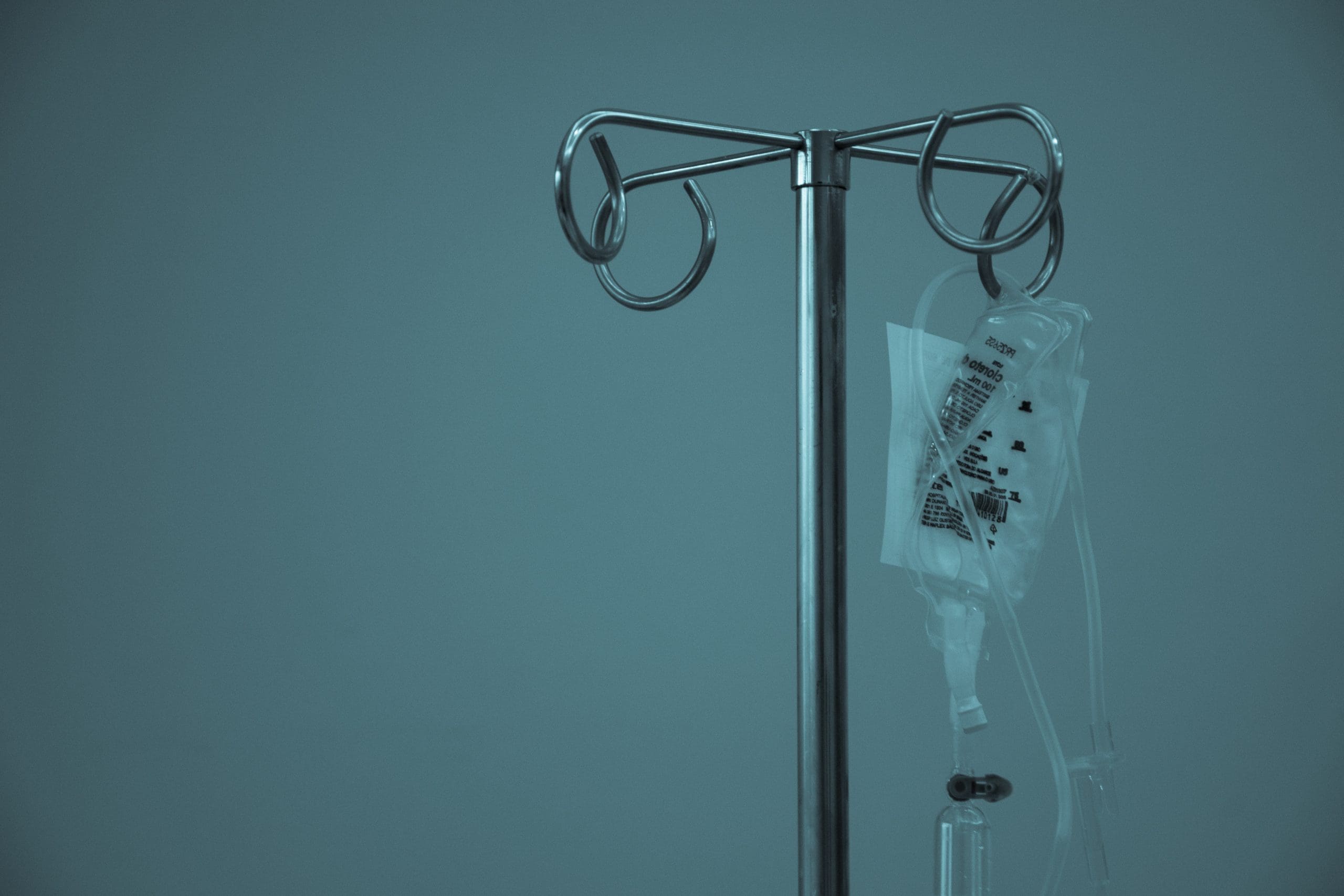What’s the best dressing for a central venous catheter (CVC) site? That’s the question we asked. At our facility, we were using several different dressings and methods, and we wondered if we could determine the best option. To find out, we performed a study, comparing three common methods.
Our review of the literature showed that many studies have examined dressing materials and skin-cleaning preparations. The evidence indicates that chlorhexidine is an effective cleaner. When used with either transparent or gauze dressings, it decreases skin colonization.
However, the studies didn’t discover a superior dressing material. They do show that adherence of the dressing and visibility of the insertion site are important considerations. And the Centers for Disease Control and Prevention says that when used with chlorhexidine, transparent dressings can be changed weekly, if they remain intact. Gauze dressings must be changed more frequently because they prevent observation of the site.
Our purpose and population
The purpose of our study was to compare the method we most commonly used—the tape and gauze method— with two other methods. We had three outcome criteria:
• dressing condition. Was the dressing soiled in any way; was it wet, moist, bloody, dry, dirty?
• adherence. Did the dressing stay intact?
• nursing time. How much time was needed for dressing changes?
We received Institutional Review Board approval and an expedited status for our study. We weren’t required to obtain written consent, but we did obtain the patients’ verbal consent.
Our study population was a convenience sample of adult patients with CVCs, hospitalized on two general-medicine, acute-care units between June and August 2005. We excluded patients with implanted chest and arm ports.
Three dressing methods
• tape and gauze. These dressing materials were part of our hospital’s central-line kit, and we routinely used this method.
• transparent dressing (Tega-derm) and gauze. This dressing was commonly used with sterile gauze underneath because users believed the gauze prevented sticking and made removing the dressing easier.
• transparent dressing (SorbaView) alone. This dressing has cloth tape borders and a reinforcing panel to secure a CVC. We also tested a type of SorbaView designed for internal jugular lines. For the purposes of our study, we considered these two types to be one method.
The study nurses were trained in the three methods, and descriptions of the methods were on the study data collection sheet. For all three methods, the nurses cleaned the catheter sites with 2% chlorhexidine gluconate (Chloraprep), using sterile technique.
The discharge coordinators on each unit identified patients with CVCs, updated the list of CVCs daily, and placed it at the nurses’ station for easy access. The unit clerks randomly assigned the methods to the patients by blindly picking slips of paper from a jar. Then, the unit clerks placed a colored paper indicating the assigned dressing method at the head of the patient’s bed.
We told non-study nurses to notify the study nurses when a patient needed a CVC dressing change. We provided a list of study nurses on the daily assignment sheets, so everyone knew who was available to change the CVC dressings. The CVC sites were dressed and assessed for skin integrity and adherence three times a week by one of the study nurses. This process continued until a patient was discharged, transferred to a non-study unit, or had the CVC removed.
Analysis and answers
We determined descriptive statistics for all variables of interest. And we used a chi-square test to test the relationship between the dressing method and adherence. Significance was set at p=0.05. We estimated cost savings.
We evaluated 224 dressing applications for these CVCs: percutaneously inserted central venous catheters (59%), traditional direct, nontunneled catheters (26%), and sutured Hohn catheters (15%). For all methods, 65% of the dressings adhered; 34% lost adherence; and 1% were pulled off by the patient. The SorbaView method performed the best.
Because the SorbaView dressing, unlike the two nontransparent dressings, can be left in place for a week, we estimated a hospital-wide change would save more than $35,000 a year on materials alone. To accurately determine the weekly cost of our hospital’s central-line kits, we added the cost of other products commonly used to supplement them. Also, because the SorbaView dressing can be left in place longer, it saved considerable nursing time.
Positive change in practice
Our study findings led to the hospital-wide adoption of SorbaView as our standard CVC dressing. Because we were concerned that a change in practice might affect infection rates, we collaborated with the Epidemiology Department to monitor bloodstream infection rates. And because the change affects all practice areas, we will continue monitoring reports related to adherence. During the first year after the hospital-wide change, nurses reported being highly satisfied with the SorbaView adoption, and the rate of in-line infections remained the same.
With our study, we demonstrated that in an acute-care patient population, a transparent dressing (SorbaView) was more adherent than the two other methods commonly used in our facility. The change to this method resulted in cost and nursing-time savings. Nurses’ anecdotal reports continue to be extremely positive, and we are proud that we effected a positive change in practice.
Selected references
Centre for Applied Nursing Research, Liverpool, NSW. Systematic review: central line dressing type and frequency. www.joannabriggs.edu.au/cvl/cvl.php. Accessed November 20, 2007.
Gillies D, O’Riordan L, Carr D, Frost J, Gunning R, O’Brien I. Gauze and tape and transparent polyurethane dressings for central venous catheters (review). Cochrane Database Syst Rev. 2003, Issue 4. Art. No.: CD003827. DOI: 10.1002/14651858.CD003827. www.cochrane.org/reviews/en/ab003827.html. Accessed November 20, 2007.
McGee D, Gould M. Preventing complications of central venous catheterization. N Engl J Med. 2003;348:1123-1133.
O’Grady N, Alexander M, Dellinger P, et al. Guidelines for the prevention of intravascular catheter-related infections. MMWR Recomm Rep. 2002;Aug 9:(RR 1-10):1-29.
Treston-Aurand J, Mayfield J, Chen A, Prentice D, Fraser V, Kollef M. Impact of dressing materials on central venous catheter infection rates. J Intravenous Nurs. 1997;20(4):201-206.
All the authors work at the University of Virginia Health System in Charlottesville. Barbara S. Trotter is a Clinician 4 on 3W/3C. Janet L. Brock is a Clinician 3 on 3W/3C. Sandy S. Schwaner is an APN 1 in Interventional Radiology. Mark Conaway is a Professor of Statistics in the Public Health Division. Suzanne M. Burns is an APN 2 in the Health System and a Professor of Nursing in the School of Nursing.
The authors thank the CVC Study Team: Lora Carver, RN; Jodean Chisholm, BSN, RN; Sue Corbett, BSN, RN; Karen Dillow, BSN, RN; Susan Johnson Gayda, BSN, RN, CMSRN; Marian Kaminskis Gilhooly, BSN, RN; Carolyn Hatter, RN; Elizabeth Kirsch, RN; Leslie Mehring, BSN, RN; Rebecca Penhall, BSN, RN; Carole Miller Prentiss, RN; Teresa Radford, BSN, RN; Susan Wetherall, RN; and Malinda Whitlow, RN.


















